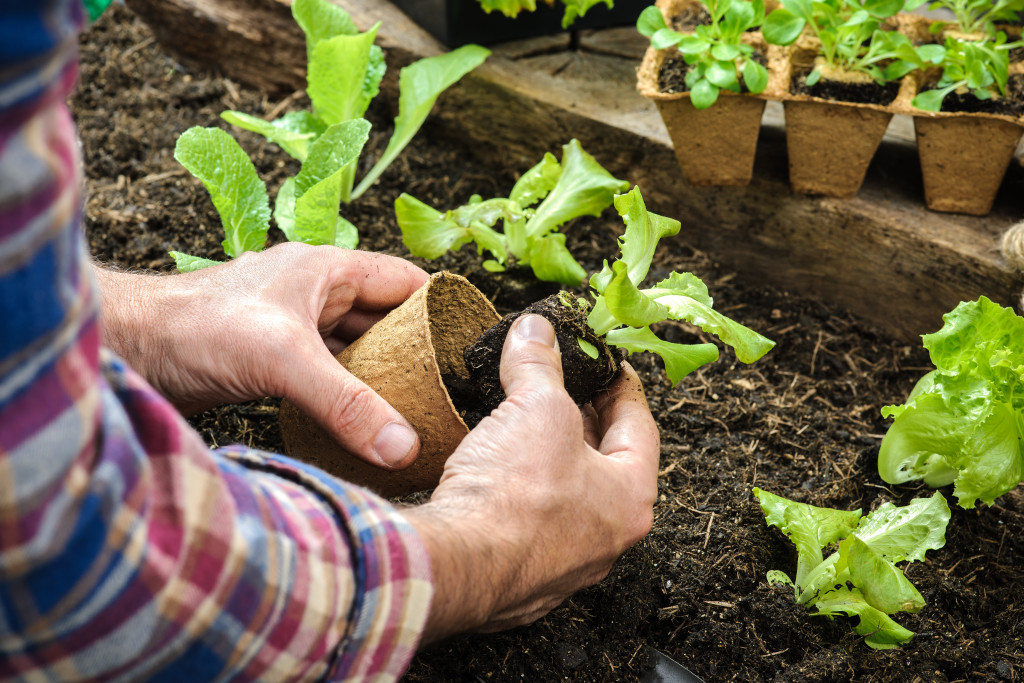- Automation can help reduce manual work and save money on labor expenses.
- Robots can improve efficiency and provide useful data analysis.
- Smart sensors are an excellent way to monitor crops and gather valuable data.
- Modern irrigation systems can improve crop yields and enhance product quality, all while conserving water.
- Using drones can quickly identify crop health issues, resulting in cost savings and improved yields.
Agriculture has always been a key part of the global economy, but technological advances make it possible to take agricultural production to new heights. Utilizing technology can help farmers increase their yield while decreasing costs. Technology has the potential to revolutionize how farming is approached, not only leading to increased yields but also improved sustainability practices.
Installing modern greenhouse facilities

The use of technology in agriculture is rapidly transforming the way we grow vegetables and fruits. One technological advancement that continues to gain popularity is modern greenhouse facilities.
These facilities have high-tech features like automated watering systems, nutrient sensors, and light control mechanisms. Installing these facilities helps farmers create the perfect environment for their crops and, as a result, increases their productivity and profitability.
Moreover, modern greenhouse facilities allow farmers to grow crops year-round, creating a more sustainable farming operation. Thus, serious consideration should be given to modern greenhouse facilities for more efficient and sustainable agriculture.
Utilizing automation
Utilizing automation is a great way to reduce manual labor and labor costs. Here are some ways automation can be used in agriculture:
Implementing robotic technologies
Integrating robotic technologies in agriculture is a forward-thinking approach that can lead to numerous benefits. Robots in the agricultural sector can help boost the efficiency and productivity of tasks such as harvesting, planting, and monitoring crops.
This technology can also reduce the need for manual labor, leading to cost savings, and can help farmers make more informed decisions by providing insightful data analysis. Implementing robotic technologies in agriculture requires careful consideration as it encompasses various factors such as financial resources, infrastructure, and compatibility with existing systems.
Therefore, seeking expert advice and conducting extensive research is crucial before diving into this technological advancement. When implemented correctly, robotic technologies can elevate agricultural productivity to new heights.
Utilizing smart sensors for monitoring crops
In today’s world, technology has become an integral part of almost every industry, including agriculture. Utilizing smart sensors for monitoring crops is no exception. Such sensors are highly efficient in collecting and analyzing data to help farmers make informed decisions about their crops.
However, it is important to consider a few things before integrating these sensors. First and foremost, farmers need to evaluate what type of crops they are growing and which sensors would suit their needs the best.
They also need to keep in mind the location and climate of their farm, as these factors can influence the performance of the sensors. Ultimately, by properly considering smart sensors, farmers can enhance their overall productivity and reduce potential losses – a win-win situation for everyone involved.
Adopting modern irrigation systems
Farmers and growers must seriously consider adopting modern irrigation systems to utilize technology to enhance agricultural production properly. These systems, which use computerized sensors and advanced algorithms to simulate the optimal growing environment for crops, have proven to be game-changer in agriculture.
Not only do they result in higher crop yields and better-quality produce, but they also conserve water – an increasingly important concern for environmental sustainability. By employing this advanced technology, farmers can ensure that their crops receive the exact amount of water they need, when they need it, without over- or under-watering. Thus, it is highly recommended that anyone seeking to enhance their agricultural output consider adopting modern irrigation systems.
Using drones to spot crop health issues quickly

The agricultural industry has increasingly incorporated technology to amplify productivity and quality of produce. One such innovation is using drones to identify crop health issues, providing farmers with immediate and precise data.
This technology equips remote-controlled aerial vehicles with cameras that capture high-resolution crop and soil images. These images can then be analyzed for signs of disease, pests, or nutrient deficiencies. The rapid identification of such issues can save farmers money and increase yields.
Moreover, with drones being able to survey large areas relatively quickly, drones can help manage crops more efficiently. Given the benefits of this technology, properly considering the use of drones is an important decision for farmers who wish to keep up with the fast-paced evolution of the agricultural industry.
Introducing GPS technology in tractors and other machinery
As the world continues to evolve, so does agriculture. With the complex nature of modern farming, technology has played a significant role in improving yields and productivity. One is GPS technology, which can be utilized to plan and manage various agricultural practices properly. By adding GPS to tractors and other machinery, farmers can seamlessly track their equipment and reduce the chances of overlap.
This leads to reduced fuel usage and increased yields. In addition, GPS can provide real-time data on soil moisture levels and nutrient discrepancies, helping farmers make informed decisions regarding planting and fertilizing. Properly considering GPS technology in agricultural machinery can lead to accurate field mapping, reduced operational costs, increased productivity, and, most importantly, enhanced food security.
These are but a few of the ways technology can revolutionize agriculture. To maximize the potential of these advancements, farmers and growers must conduct research and ask for professional advice before making any changes.
